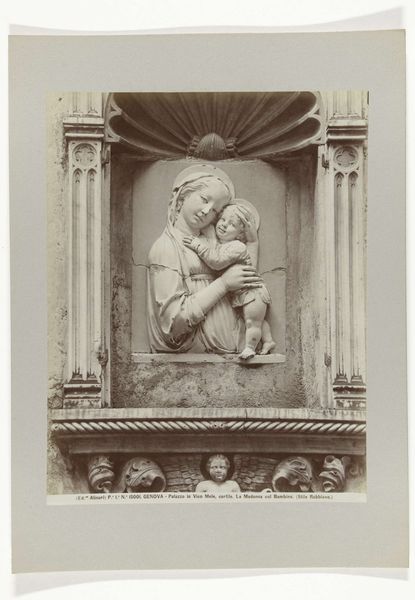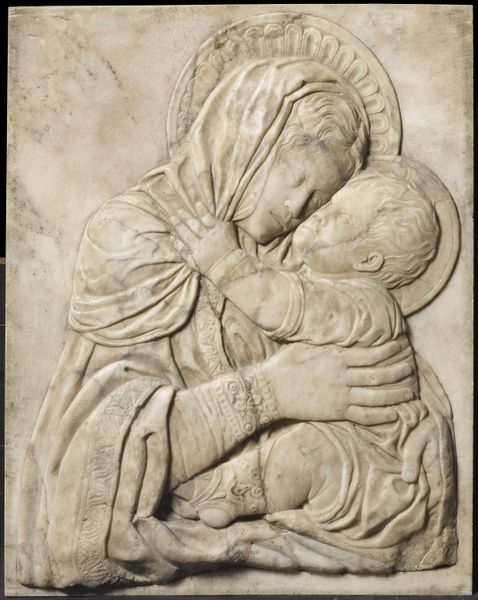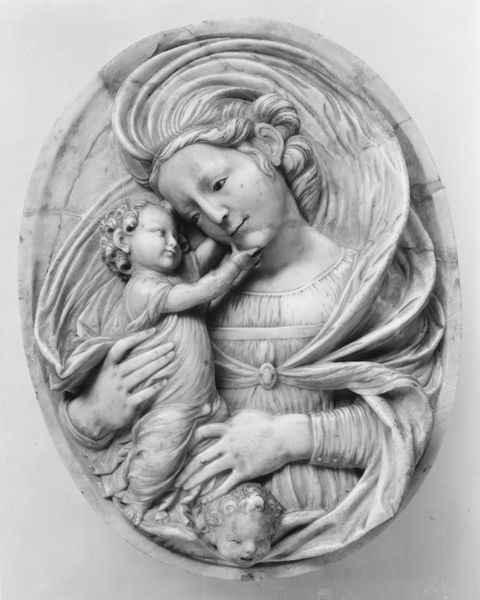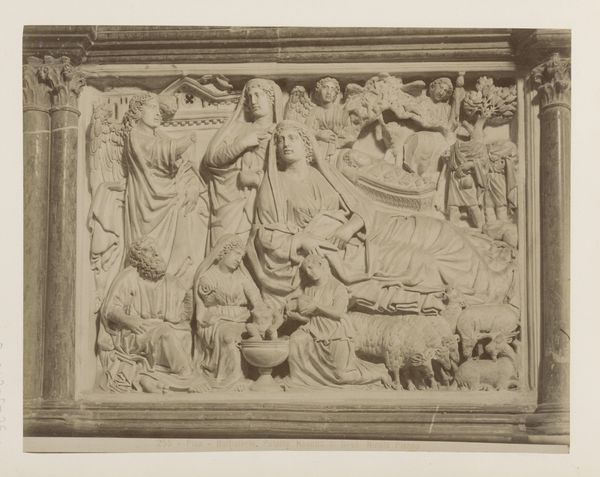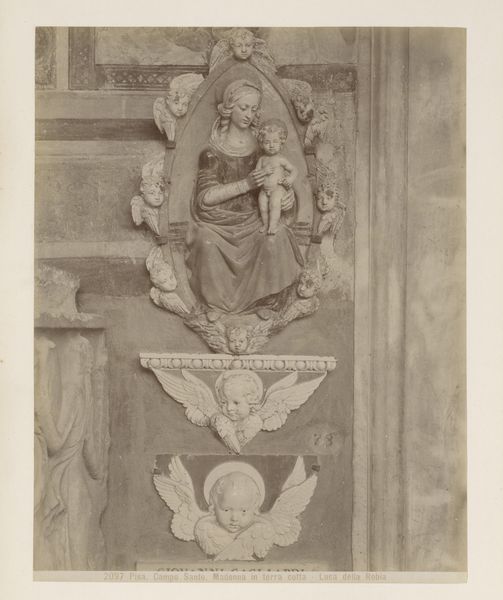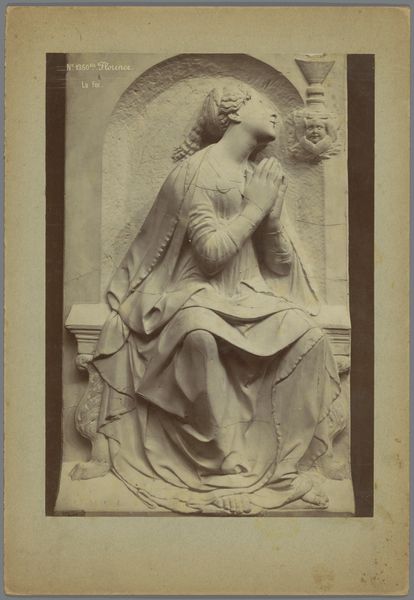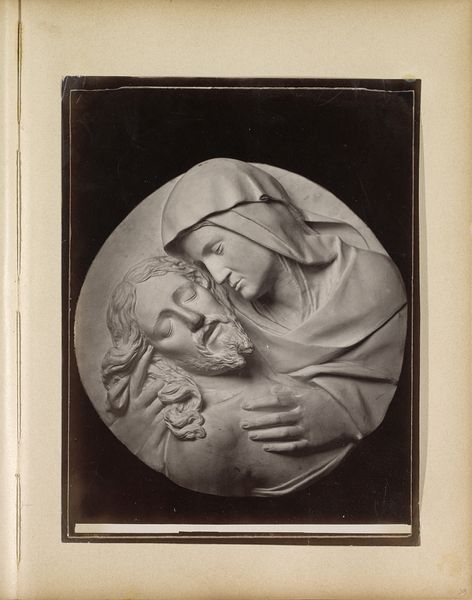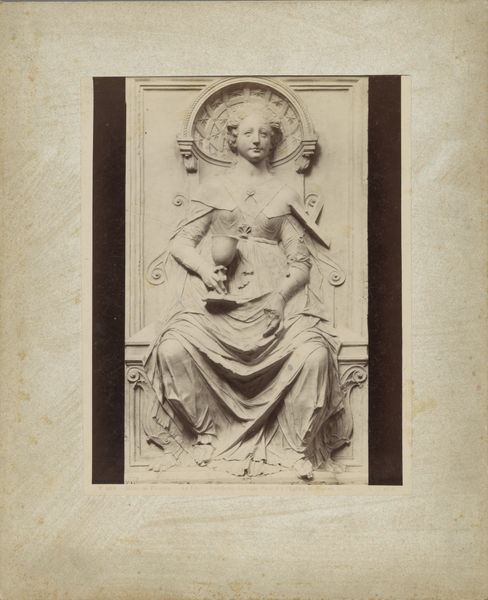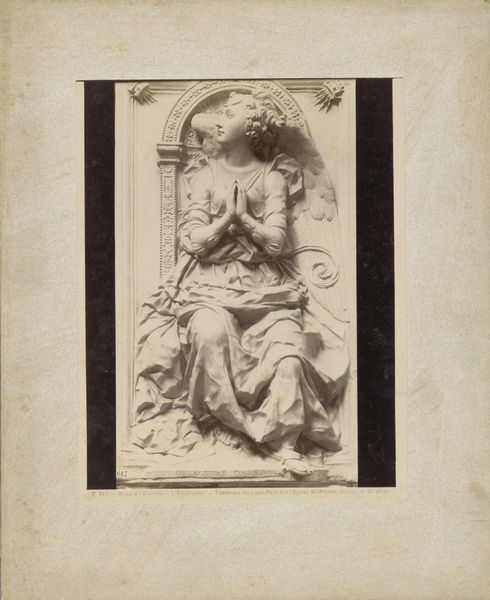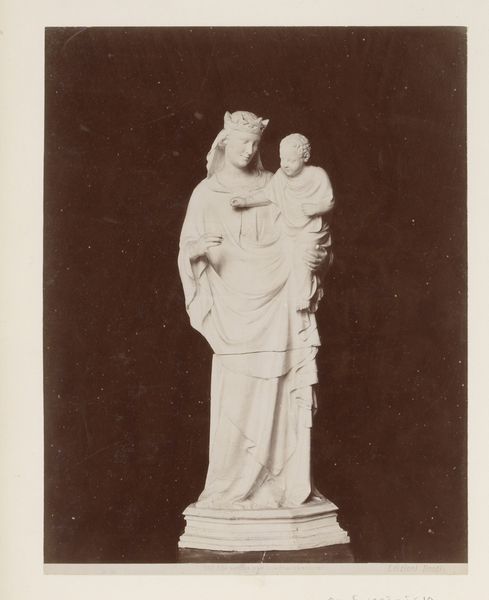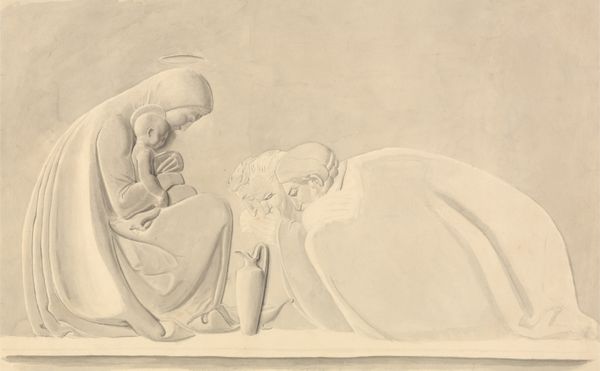
relief, sculpture
#
relief
#
sculpture
#
history-painting
Dimensions: height 270 mm, width 184 mm, height 539 mm, width 421 mm
Copyright: Rijks Museum: Open Domain
Curator: Let’s explore this intriguing artwork: Gustave Le Gray’s relief sculpture, likely created between 1857 and 1860, depicting the Virgin Mary with the Christ Child. Editor: Immediately, I'm struck by its quiet reverence. The somber earth tones contribute to an intimate mood; it's the moment made monumental. Curator: Indeed, this rendering is rife with recognizable symbols. Consider the adoring gaze of Mary, her posture, the infant Christ himself, and, of course, the cherubic angels positioned to complete the celestial narrative above them. All serve as icons of a very particular visual tradition. Editor: The strategic visual composition makes the themes even more forceful. But, it's hard for me to overlook the fact that, especially during Le Gray’s lifetime, the image of a peaceful, meek Mary has been deployed to uphold conservative ideas about motherhood and womanhood. How might viewers in his time respond differently? Curator: It is worthwhile considering the cultural milieu and societal conventions that inevitably influence these historical artistic endeavors. Still, to reduce this bas-relief to a mere ideological tool overlooks the deeply internalized nature of religious experience that also permeated that society. Surely it reflects sincerely held convictions about compassion and motherhood at that time? Editor: The weight of societal constructs is never truly separate from individual or cultural faith, though. And consider the socioeconomic implications—art as luxury objects to elevate both their patrons, but equally, that image of the "ideal family." Curator: One must then think more broadly. It could very well signal a longing for simplicity amid a rapidly modernizing world. The work echoes a collective desire for stability and familiar narratives about love, duty, and faith during turbulent times, but rooted in the well-trodden paths of established beliefs. Editor: These readings definitely help connect what might feel like something passively "old" into ongoing issues of politics, identity, gender, and family roles that persist. I walk away considering art historical portrayals of motherhood within our still patriarchal social structures. Curator: Yes, and also thinking of how this piece echoes art through time as an archive of beliefs, presented here in miniature in its formal features, reminding viewers then, and even now, that a network of shared and recognizable themes connect people across time.
Comments
No comments
Be the first to comment and join the conversation on the ultimate creative platform.
